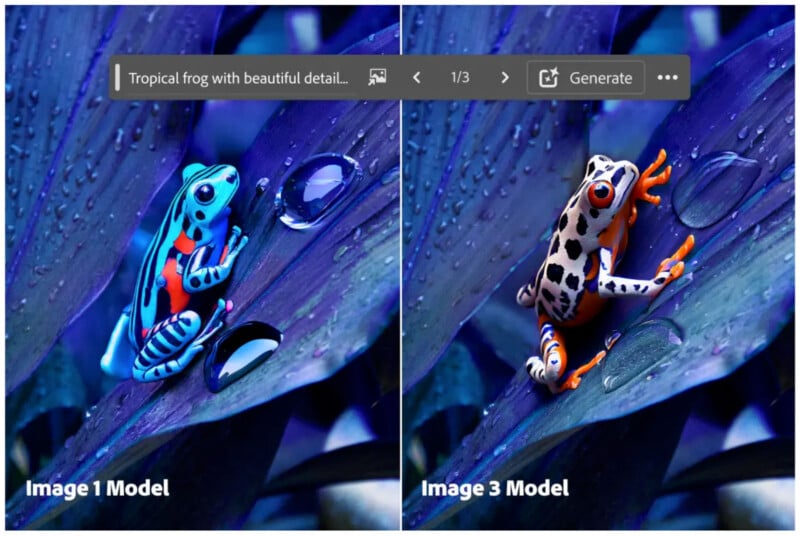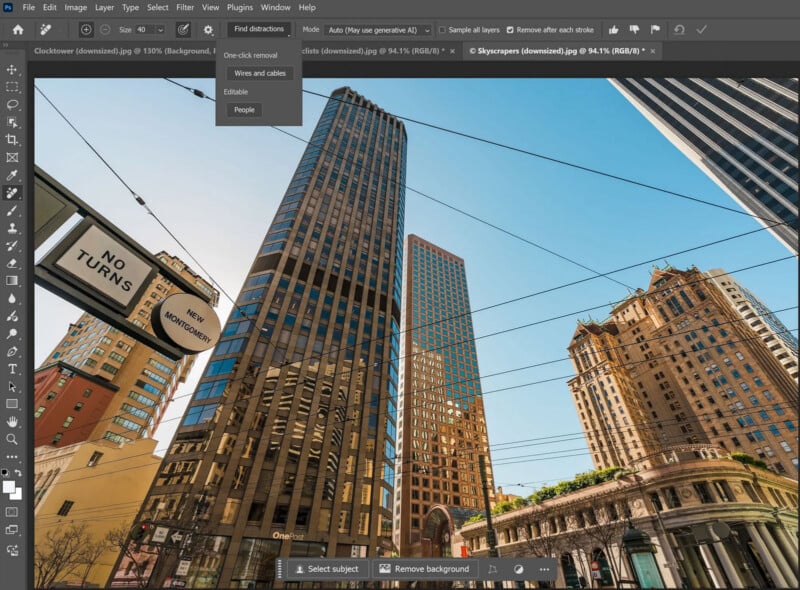Photoshop Now Automatically Removes All Those Pesky Distractions
![]()
Adobe Photoshop is a powerful, popular tool for photographers. With the latest update, Adobe further enhances Photoshop’s artificial intelligence (AI) tools, improving the app’s capabilities for photographers and other visual creators.
The new Distraction Removal feature built into Photoshop’s Remove Tool aims to simplify photographers’ lives. The Remove Tool was released last year, enabling users to brush over or circle an object to remove it from the image. Photoshop then uses AI to fill the space.
With Distraction Removal, removing distractions from photos is even easier. With a single click, Photoshop can automatically find, remove, and replace common distractions in an image, including people, wires, and cables.
![]()
Adobe’s Pam Clark notes a couple of obvious ways this new tool can benefit photographers. Clark notes a travel photographer who wants to remove tourists from their photos or a wedding photographer who typically needs to remove unwanted background distractions from images manually.
The Remove Tool has other new functions, too. It automatically chooses between different technologies to deliver the best results in a given situation. Adobe Firefly has been added as an option with the new Photoshop update. However, users can now disable Generative AI from the Remove tool to fit their preferences.

Concerning Adobe Firefly, Photoshop now features the latest Firefly Image 3 Model both in the desktop app and in Photoshop on the web. The latest Firefly model powers numerous Photoshop features, including Generative Fill, Generative Expand, Generate Similar, and Generate Background.
“The new Adobe Firefly Image 3 Model produces greatly improved photorealistic quality, better understands complex prompts, and generates more variety in results, which enables you to explore different creative directions,” Clark explains.
![]()
For those unfamiliar with some of the relatively new generative AI tools in Photoshop, Generative Fill enables users to add or remove content from an image using text prompts. In contrast, Generative Expand allows users to extend the edges of their photo using the Crop Tool. This can be a powerful way to change the aspect ratio of an image or help give an interesting subject additional breathing room in the frame.


These AI tools, alongside Generate Similar and Generate Background, are all recorded within Content Credentials when they are enabled inside Photoshop, ensuring transparency concerning the use of generative artificial intelligence.
Following the color workflow updates Adobe recently introduced in Premiere Pro, Photoshop is getting some love there, too. Photoshop now features OpenColor IO (OCIO), an important color standard in the visual effects and film industry.
Photoshop on desktop (beta) also now supports a 32-bit workflow for HDR photo editing. This enables users to perform a wide variety of editing tasks without dropping down to 16-bit or 8-bit color, which preserves image fidelity and color accuracy. While not every tool works with 32-bit workflows, many do, including dodge, burn, magic wand, healing brush, spot healing brush, remove tool, black and white adjustment layer, color balance adjustment layer, content aware move, HDR histogram, and more.
Another early access tool is Generative Expand in Adobe Camera Raw, which is now available in early access. This works the same way it does in Photoshop’s Crop Tool, allowing photographers to fill in expanded edges of their photos through ACR.
One more tool arriving to ACR in early access is Adobe Adaptive, a new image profile built in collaboration with professional photographers. This profile delivers image-specific rendering with internally applied adjustments for sky and people. Adobe says it is ideal when working with images that feature a high dynamic range, like landscapes, architecture shots, and high-contrast scenes.
Image credits: Adobe. Featured image created using an asset licensed via Depositphotos.